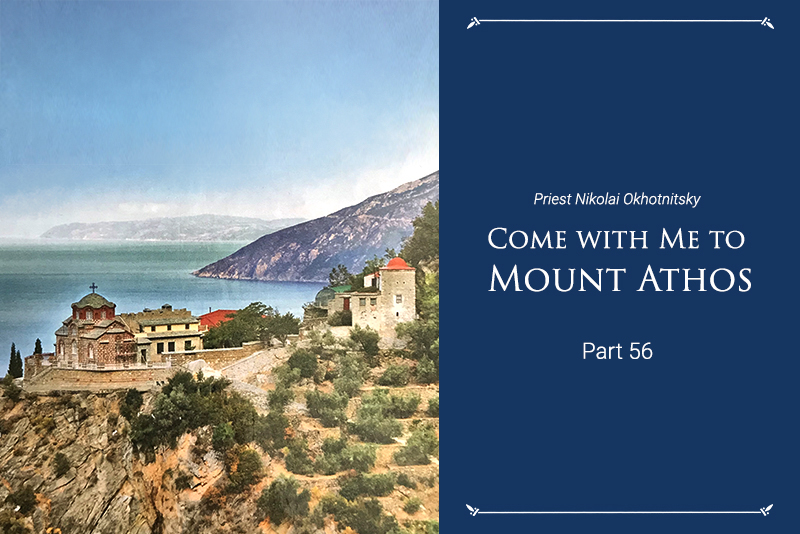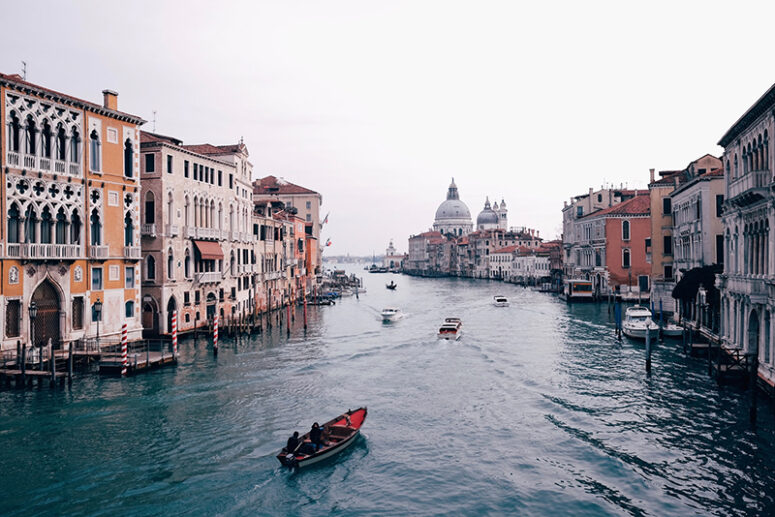
In the previous article, we began to describe the major Orthodox shrines of Venice. We spoke about how the relics of St Mark the Evangelist and the revered icon of the Mother of God called Nikopeia came to this city. This article is dedicated to St Paul of Thebes, known to be the first hermit monk, and his venerable relics, as well as the column from Solomon’s Porch and other shrines.
The Relics of St Paul of Thebes

The relics of the first Christian hermit St Paul of Thebes rest in a reliquary over the main altar of the church of St Julian of Antinoe (a 2nd century martyr). Saint Julian dreamed of a celibate life, but did not dare to violate his parents’ blessing for marriage. After getting married, together with his wife Vasilissa he continued to preserve their virginity until the death of their parents, after which both spouses headed the communities of ascetics that they had also founded. St Julian’s Church was erected in the mid-ninth century and rebuilt in the mid-sixteenth century. This temple sits in a busy location just between the main square of San Marco and the famous Rialto Bridge. Unfortunately, thousands of tourists passing it every day do not imagine what an important shrine rests within its walls.
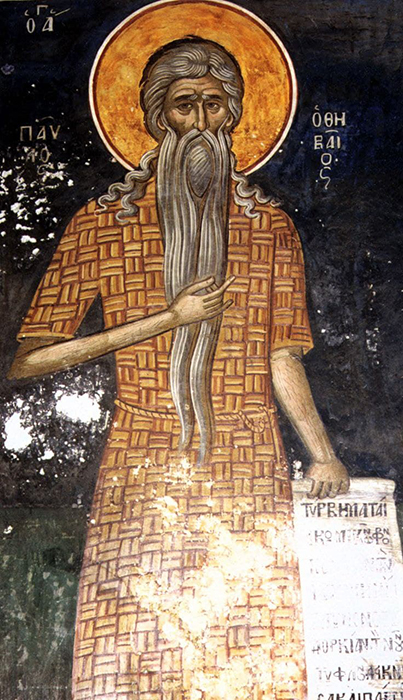
Saint Paul comes from the Egyptian Thebais. Being left an orphan, the boy suffered a great deal from his atrocious relative who oppressed him because of Paul’s parents’ inheritance. During the persecutions of the emperor Decius (249-251), the future ascetic withdrew into the desert after he learned about the insidious intention to betray him into the hands of the persecutors. He spent about 91 years there in complete solitude. Nourishing himself with dates and the bread brought by a raven, dressing in palm leaves and praying to the Lord day and night, Paul acquired great holiness and humility, in which he surpassed even St Anthony the Great. Shortly before St Paul’s death, God revealed to St Anthony (who was already thinking, there is hardly a hermit equal to him in spiritual gifts) that there was a hermit in the depths of the desert surpassing him in holiness. Anthony went to the desert and found St Paul, who taught him a lesson in humility and entrusted him with his burial. Anthony kept St Paul’s garment of palm leaves, which he revered as a great shrine and wore only on Easter and Pentecost.
The relics of St. Paul were transferred to Constantinople during the reign of Emperor Manuel I Komnenos (1143-1180) and placed in the Peribleptos Monastery. In the thirteenth century Constantinople was captured by the Latins, and the monastery passed into the hands of the Venetian Benedictines of St George. At the insistence of a noble Venetian, the abbot gave him the relics of St Paul to be sent to the Lagoon (Gulf of Venice), where they rest to this day.
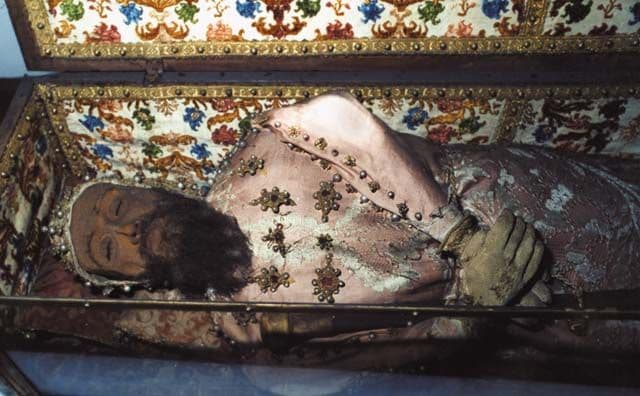
Parish of St James the Great
One of the oldest churches in Venice is the Church of James, son of Zebedee. This temple, founded in the ninth century, has been reconstructed many times, hence the variety of architectural styles and interior details that can be observed in it, including the cruciform Byzantine baptismal font, located at the entrance to the church, and the Gothic ceiling in the form of an inverted ship keel (15th century). The church contains many works of art by famous Italian artists – Paolo Veneziano, Paolo Veronese and Palma the Younger.
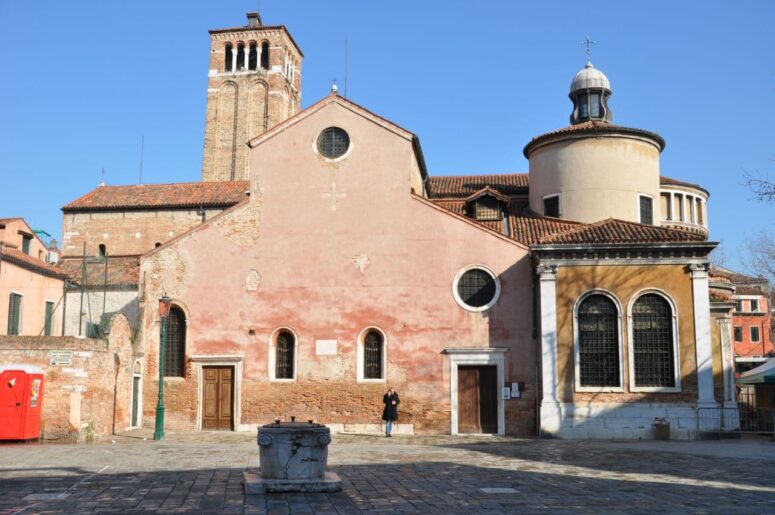
The church of St James hosts the relics of the martyr Fidelis of Como (Italy), who suffered under the emperor Maximian (285-310), and, more remarkably, the right hand of the apostle and evangelist Luke. In the twentieth century, the glass in the reliquary containing the venerable right hand of St Luke broke due to a strong storm, and the parish rector turned to the artisans from St Elisabeth Convent in Minsk (Belarus) with a request to create a new reliquary worthy of the hand that wrote the Gospel. Currently, the relics of St Luke are kept in a reliquary made with love in an Orthodox monastery.
Another equally important detail of St James church is a green marble column taken out of Constantinople during the IV Crusade. It is believed to be one of the columns from the portico of the Second Temple in Jerusalem, destroyed by the Romans in 70; but there is no reliable evidence of this. The Byzantians may well have “risen the value” of the column, attributing it to the era of the Jewish War and deceiving the warriors of the Medieval West, who were not particularly knowledgeable in art.
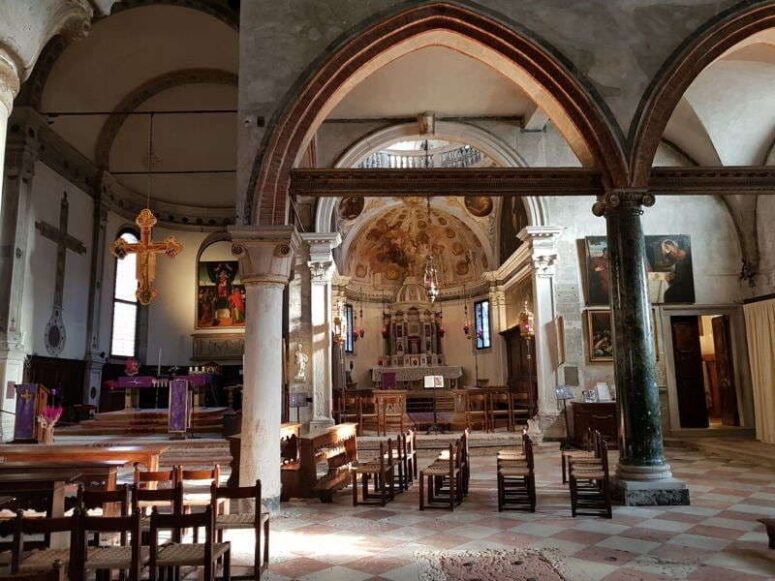
Blachernae Bas-reliefs of the Holy Virgin
The seven bas-reliefs of the Theotokos Oranta, dating back to the 10-12th centuries and also taken out of the plundered Byzantine capital, represent another great shrine of Venice. These bas-reliefs, imitating the famous Blachernae Church of the Holy Virgin (the Life-Giving Spring), are made of the famous and most valuable Proconnesus marble. They were once exhibited within the walls of the Constantinople temples and served as springs for holy water, flowing from temple reservoirs through the designated openings in the head, arms, chest and legs represented on the bas-relief icon of the Mother of God. The Venetians soon forgot the purpose of these openings and diligently covered them up. And yet, the 7 Venetian bas-relief images of the Mother of God (5 of them are in the Basilica of San Marco, one in the Church of St John Chrysostom and one in the Church of Santa Maria Mater Domini) are the only intact shrines of this kind that have come down to us from the Second Rome, once the City of the Holy Virgin.


Walking along the fabulous streets of the island city, it is worth remembering the tragedy that once befell Constantinople, in which the Venetian Republic played its fatal role. However, we should thank God for His providence, saving so many relics from destruction, and give the Venetians credit for managing to preserve these universally revered shrines for us.



